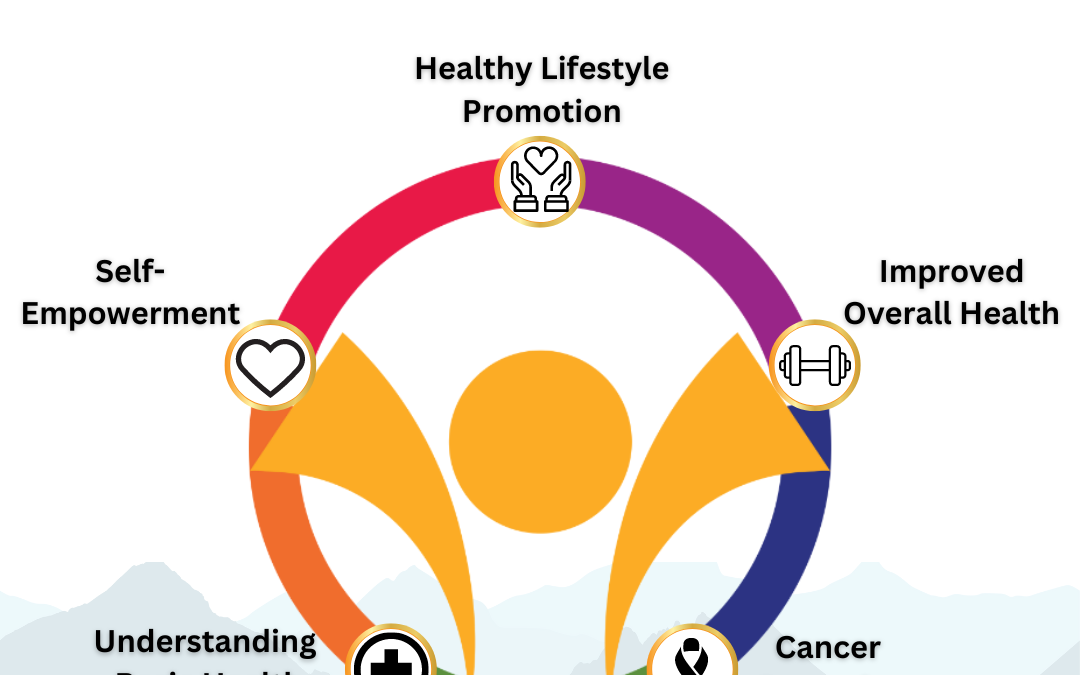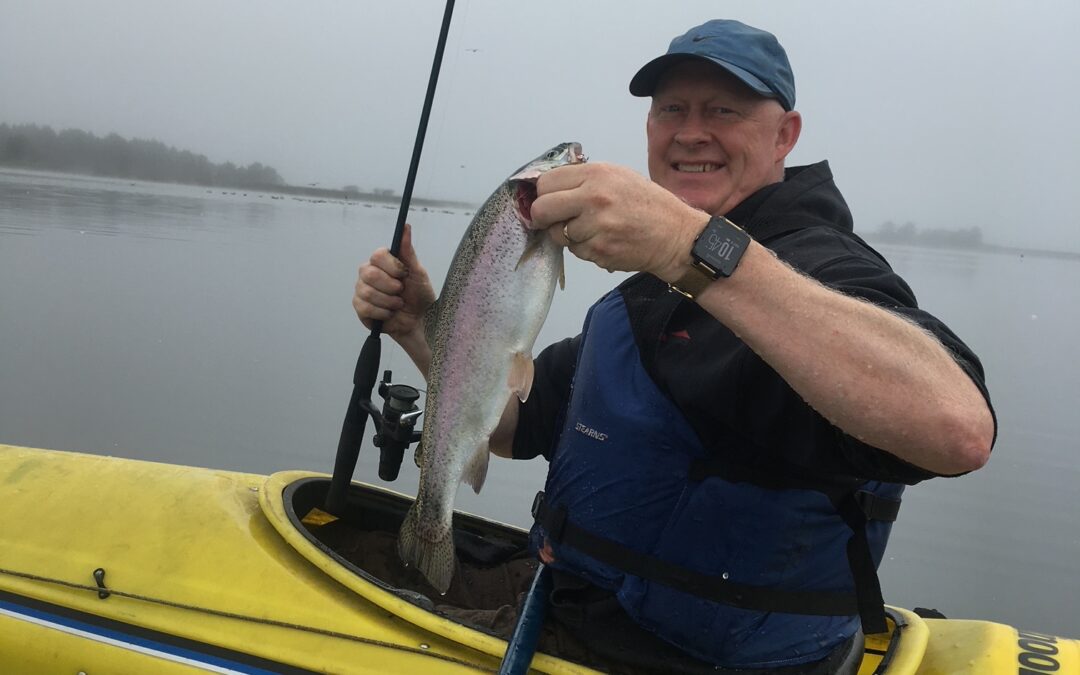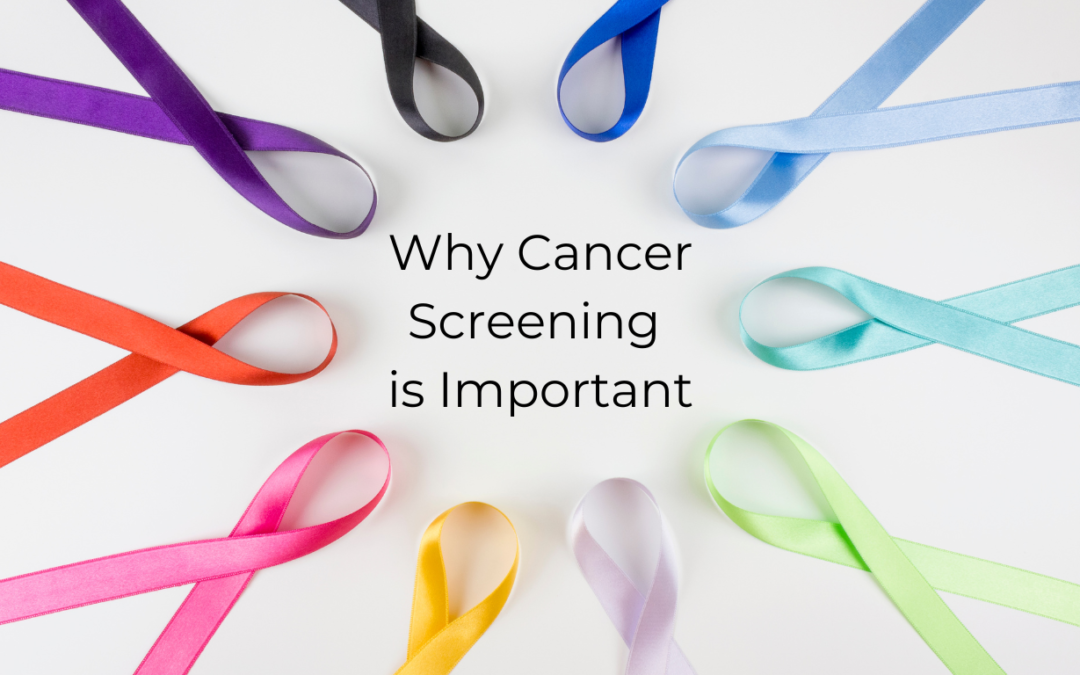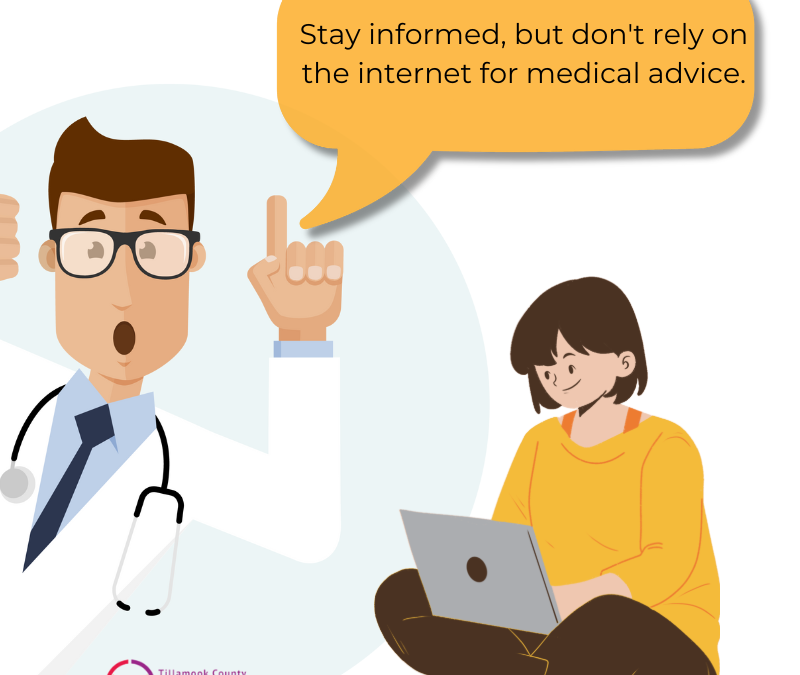
by Renee Aufdermauer | Jul 26, 2024 | Being Well, Featured
As we close our Health Literacy campaign, we reflect on the vital role of personal health literacy in enhancing our community’s well-being. Personal health literacy is more than just understanding health information—it’s about effectively finding, interpreting, and using that information to make informed decisions for yourself and your loved ones.
Thanks to the support of the Knight Cancer Institute Community Partnership Program, we’ve been able to shine a spotlight on health literacy over the last 3 months. Our goal has been to help you understand how and when to access the best care for the best possible health outcomes. Here’s a summary of the key topics we’ve covered:
Take Charge of Your Health
Health literacy means making informed choices about your well-being. From understanding prescriptions to navigating healthcare systems, knowing how to make the best health decisions is crucial.
Your Primary Care Provider is Your Advocate
Regular check-ups with your provider are essential for maintaining health and catching problems early. Your primary care provider offers personalized advice, tracks your health history, and supports your well-being. Establishing a strong relationship with your provider ensures you receive timely care. Aim to visit your primary care provider at least once a year—don’t wait for issues to escalate.
Where to Go for Care and When
Understanding where to seek care is vital. For serious issues, head to the Emergency Room. For immediate but less severe concerns, Urgent Care is the place to go. For regular check-ups and ongoing health management, your Primary Care Physician is your go-to. Making quick and informed decisions ensures you receive the right care at the right time.
Your Health is Important, and So Is Your Voice
When visiting your provider, communicate openly. Share your concerns, ask questions, and discuss any symptoms or issues you’re experiencing. Your input is crucial—if you’re unsure about something, ask for clarification or explore other treatment options. Don’t hesitate to seek a second opinion if needed. Being actively involved in your healthcare conversation ensures you get the care you deserve.
Health Screenings for Cancer Prevention
Regular health screenings are essential for early detection and prevention of cancer. Early detection can save lives. Schedule screenings based on your age and risk factors to stay ahead of potential health issues. Knowing what screenings are recommended and when to get them can significantly impact your health outcomes and even save your life.
Stay Informed and Engaged
We encourage you to keep checking back on our website for ongoing information and resources. Your health is an ongoing journey, and staying informed is key to making the best decisions for your well-being. For more information on health literacy and resources available to you, visit https://tillamookcountywellness.org/be-well/health-literacy
By increasing your health literacy, you’re taking a significant step toward better health and a more informed approach to healthcare. Stay proactive, stay informed, and most importantly, take charge of your health!
For more local health and wellness information, visit www.tillamookcountywellness.org or follow Tillamook County Wellness on Facebook or Instagram.

by Guest | Jul 12, 2024 | Being Well, Featured, Move Well, Work Well
Occupational Therapy is an often misunderstood or unheard of rehabilitative therapy. It is not just about our jobs and work we do. The easiest way to say it is therapy for anything that occupies your time. If there is anything you can’t do that you want to do, then come to us and we will help you get back to doing it. Sleeping, cooking, hobbies, socializing, travel, etc. are all things that occupy your time. There are many ways we can help by analyzing the activity and then finding other ways to do it, using exercises and strengthening to make it more possible, or using devices or equipment to make it possible. We can come to your house and do an evaluation if home modifications or larger equipment is needed, or you can come to see us in outpatient therapy to work on improving function in your life.
Occupational Therapist use more of a wholistic approach to therapy. We don’t just look at the physical, but also the psychological and sociological aspects of a person to help them. What do they enjoy, what is important to them and what they think and believe are important things to be considered. When we can’t do what we enjoy due to pain, or loss of ability this affects the whole person. We can help to deal with chronic pain management as well as behavioral management to work with the person as a whole. We are also Qualified Mental Health Practitioners and can help with depression, anxiety, or other diagnoses associated with these issues.
The best way to get a referral is through your primary care provider (PCP). Employees can self-refer, also. We’re working to increase provider awareness about our services, but your always welcome to ask questions. If you have any questions or need advice on what to say to your PCP, feel free to contact Timothy Patching at patchitr@ah.org. We’re here to help you every step of the way!

by Guest | Jun 20, 2024 | Being Well, Featured
The term women’s health covers more than just pap smears and mammograms. This category of healthcare has a wide scope covering care for people with a uterus from menstruation to pregnancy and osteoporosis, along with all of the health screenings in between. Women’s health aims at improving health over the lifespan with treatments and screenings beginning in the teen years and spanning the rest of a person’s life. The terminology for the women’s health category is evolving to recognize transgender and non-binary people. The women’s health category is inclusive for all people based on anatomy, not gender identity.
An Ounce of Prevention
One of the best things a person can do to take care of themselves is get routine screenings. Ideally, everyone should check in with their healthcare provider annually for a well check, but other screenings vary by age and circumstance. Routine health screenings serve to detect warning signs of potential health issues before they become serious problems. This allows the medical provider to work with the person on getting any needed treatment. Health screenings also help catch medical conditions early, which makes them easier to treat.
The typical preventative visit includes:
Additional Adolescent Screenings
Parents sometimes stop well-child checks when their kids become teens, but really they shouldn’t. When pre-teens begin noticing physical changes, a healthcare provider can help answer questions and discuss expectations for developing bodies. This is also the transition into adulthood with health screenings. All the above screenings become relevant. Additionally, the potential for sexual activity in teens also must be addressed. Things that may begin screening in adolescents:
- When someone becomes sexually active, they need screening for sexually transmitted diseases (STDs) at least once a year and with every partner change. In Oregon, chlamydia and gonorrhea are the most common STDs with syphilis on the rise.
- Counseling for STDs.
- Screening for the Human Immunodeficiency Virus (HIV).
- Screening for intimate partner violence is recommended at least once a year in women/persons of reproductive age.
- Contraception Counseling is recommended for anyone not seeking a pregnancy in the next year. Gender-affirming hormone therapy is not adequate for contraception.
Routine Women’s Health Screenings
As the transition into adulthood continues, so does the transition of screenings. Continue with annual health checks, and now add the pap smear, which screens for cervical cancer.
- Cervical cancer screening from age 21 to 65 years.
- Pap alone every three years in ages 21 to 29
- Over age 30 testing with pap smear and for high-risk human papillomavirus (HPV).
- Screening for diabetes in overweight or obese people who don’t have symptoms starting at age 35.
- Breast cancer screening for the average at-risk person beginning at age 40.
- Colorectal cancer screenings now start at age 45.
Pregnancy-specific screenings:
- Intimate partner violence screening remains important during pregnancy.
- Screening for hepatitis B at the first prenatal visit.
- Gestational diabetes screening and healthy weight gain counseling during pregnancy.
Older Adult
Older, wiser, and still getting health screenings. The older adult stops getting cervical cancer screenings after age 65 if they have been cancer free. STD screenings may continue as needed. A discussion with the healthcare provider may lead to discontinuation of colorectal and breast cancer screenings in 70 to 80-year-olds based on prior history and risk factors.
- Urinary incontinence screening. Women have come to believe incontinence is normal in aging. It is not.
- After menopause, osteoporosis becomes a risk due to the drop in hormones. Current screening guidelines recommend starting assessment at age 65 for average risk. Persons at higher risk, such as those with a family history of osteoporosis, begin screening at a younger age.
- Lung cancer screening for people with a 20-year smoking history.
Taking care of yourself remains the cornerstone in staying healthy to provide care to the ones you care about. Whether it is your husband, children, or dog. Check with your healthcare provider and stay up to date with your routine screenings.
To learn about preventive health across the life span, click HERE.
Resources:
The American College of Obstetricians and Gynecologists. (2021). Health Care for Transgender and Gender Diverse Individuals (Committee Opinion No. 823). https://www.acog.org/clinical/clinical-guidance/committee-opinion/articles/2021/03/health-care-for-transgender-and-gender-diverse-individuals
National Institute on Alcohol Abuse and Alcoholism. (2024) Rethinking Drinking. (NIH Publication No. 23-AA-3770). U.S. Department of Health and Human Services, National Institutes of Health. https://www.niaaa.nih.gov/sites/default/files/publications/NIAAA_RethinkingDrinking.pdf
Oregon Health Authority. (2024, June 11). Oregon’s Weekly Communicable Disease Report. https://public.tableau.com/app/profile/oregon.public.health.division.acute.and.communicable.disease.pre/viz/WeeklyCommunicableDiseaseReport/ACDPWeeklyReport
U.S. Preventive Services Task Force. (Accessed June 15, 2024). A & B Recommendations. https://www.uspreventiveservicestaskforce.org/uspstf/recommendation-topics/uspstf-a-and-b-recommendations
Health Resources & Services Administration. (2022) Women’s Preventive Services Guidelines. https://www.hrsa.gov/womens-guidelines-2016
Author: Leanna Coy, FNP-C, Family Nurse Practitioner and Health Content Writer

by Guest | Jun 7, 2024 | Being Well, Featured, Uncategorized
Cancer screening can seem really scary, time consuming, like a waste of time, or a host of other things that it doesn’t have to be! It’s sometimes uncomfortable, stressful, and anxiety-inducing until you get those negative results. Nevertheless, cancer screening saves lives! Increased cancer screening, along with fewer people smoking and improved cancer treatments, have contributed to preventing about 3.2 million cancer deaths from 1991-2018 (American Cancer Society, 2021). The American Cancer Society (ACS) recommends screenings for breast, cervical, colorectal, lung, and prostate cancers. Early detection of these cancers can substantially improve a patient’s chances at entering remission and having less intense treatment.
There are things we can do for our bodies to naturally decrease our cancer risks, though anyone can get cancer. The ACS has several recommendations aimed at reducing cancer risks:
- Stay away from tobacco
- Get to and stay at a healthy weight
- Get moving with regular physical activity
- Eat healthy with plenty of fruits and vegetables
- Eliminate alcohol consumption. If you do consume alcohol, have no more than 1 drink per day for women or 2 per day for men.
- Protect your skin (i.e. SPF, UV protectant clothing, etc.)
- Know yourself, your family history, and your risks
- Get regular check-ups and cancer screening tests
(ACS)
Following these recommendations and participating in the recommended screenings at the appropriate ages can substantially reduce your risk of serious cancer illness and even death. Even the ‘healthiest’ person may develop cancer, so it is important to follow screening guidelines. Barbara Klein, a 60-year-old school bus driver ignored recommendations for screenings like many Americans, until a 40-year-old friend was diagnosed with stage 4 colon cancer. This shocked her, but motivated Barbara to order Cologuard to check her colon health at home. Presuming she was in good health with nothing to worry about, the call that something abnormal was found in her colon shocked her further. Barbara was eventually diagnosed with stage 1 colon cancer, promptly underwent surgery, and as of June 2022, had been cancer-free for 5 years (Klein, 2022).
Barbara’s story started with devastating news of a friend, but yours doesn’t have to. Keep up with your own cancer screenings to reduce your risks of advancing cancer. Contact your primary care provider if you have concerning symptoms or are overdue for a cancer screening. Knowledge can be one of the best prescriptions for cancer risk reduction!
Written by Guest Blogger, Emery Edwards

by Guest | May 30, 2024 | Being Well, Featured, Uncategorized, Work Well
When your primary care provider (PCP) retires, you move, or your insurance changes, finding a new healthcare provider can be challenging and anxiety-inducing. You want someone you can trust with, well, you. You want someone knowledgeable and empathetic to your personal needs. After all, this is someone you will see during times of vulnerability. Finding the right fit and fostering a good relationship is a vital part of managing your health. There are steps you can take to find someone you are comfortable with who provides the care you are looking for.
Choosing Your Doctor
Many different things go into why you choose a specific healthcare provider. Determine what is most important to you when selecting someone to see.
Qualifications: A PCP is a healthcare provider who sees people for common medical problems. Traditionally, this was a doctor. In the State of Oregon, medical doctors (MDs), osteopathic doctors (DOs), nurse practitioners (NPs), physician assistants (PAs), and naturopaths (NDs) can all work as primary care providers. Each type of provider has medical training, but the training varies based on their education, which affects how they provide care.
Get to Know Them: Look up their profile on the clinic’s website. This usually includes a photo and a bit of information about the person. Reading online patient reviews may give you a sense of their communication or practice style.
Office Hours and Availability: Finding someone who works when you don’t will make getting your routine care easier. Make sure you know their clinic’s hours, including any weekend or evening availability. Also, when you call to schedule, ask about the specific provider’s availability. Are they booked out months in advance? That is a warning about potential difficulty seeing them when an issue arises.
Insurance Coverage: Some clinics may take your insurance, but your insurance may not cover the one provider you want to see. An example of this is with naturopaths who are not covered by Medicare. It is also important to remember this when your insurance changes. A new insurance may not cover the provider who has managed your care for the last 10 years. Contact your insurance company for a list of covered providers.
Before Your First Appointment
Preparing your first appointment will make the appointment go more smoothly for both you and the new PCP. There are basics any new healthcare provider will need:
Collect information on your medical history:
- Past surgeries, illnesses, chronic health conditions
- Current medications, supplements, and allergy list
- Vaccination record
- Family medical history
Make a list of concerns to talk about with the provider:
- What is most concerning to you that day?
- Keep the list short with at most three items. Appointments are typically only 20-40 minutes. Respect the provider’s time to see their other patients by scheduling a second visit if needed.
- Do you have high blood pressure or diabetes? Write down recent readings to share with the provider.
Making the Most of Your First Visit
Show up prepared to get the visit off to a good start. This will help reduce any anxiety or stress you may have about it.
- Make sure to give yourself enough time for the appointment without needing to rush off to another task.
- Arrive early to fill out paperwork.
- Bring any past medical records or contact information for your previous PCP and specialists.
- Remember that insurance card!
Plan for open communication.
- Be honest about your health. The PCP can’t give you the best care if pieces of your healthcare puzzle are missing.
- Talk about your healthcare goals. Are you worried about a family history of dementia or trying to bring down your blood pressure? Let them know.
- Ask questions to clarify information you don’t understand.
- Request a written summary of the visit for you to review later.
- Know the next steps, such as any follow-up visits or referrals.
Building a Long-Term Relationship
Any good relationship requires effort from both sides.
- Stay in touch with your healthcare provider by scheduling regular well checks.
- Schedule and keep the follow-up visits your provider recommends. These visits are generally to keep an eye on health concerns.
- Keep your PCP updated about any changes to your health, such as new injuries or surgeries.
- If you see a specialist, go to urgent care, or the emergency room, make sure the records of your visit are sent to your PCP.
Finding a PCP can go smoothly with a bit of preparation. One of the fundamental components to developing a good relationship with your healthcare provider is seeing them regularly, not just when you have a problem. This helps the PCP get to know you and your health situation. Open communication will go a long way in building a strong provider-patient relationship, which can help to improve your health outcomes.
AUTHOR: Leanna Coy, FNP-C, Family Nurse Practitioner and Health Content Writer

by Guest | May 17, 2024 | Being Well, Featured, Uncategorized
Fortunately, Buzzfeed has never claimed to be able to give you any medical diagnosis. But plenty of other sources on the internet walk the fine line between “this is not medical advice” and “this sure sounds a lot like medical advice”. There’s a quiz for everything, and a “cure” for everything. A problem you didn’t know you had, and the product that can solve it (for three easy payments of $19.95, plus shipping and handling!) Anything and everything to do with your health can be found with a few taps on your phone, so it’s important to recognize how media literacy ties in with health literacy.
Let’s take a step back. About 21% of US adults experience chronic pain, or pain that lasts for three or more months. Millions suffer from conditions that have no known treatment or cure. Our doctors don’t always have the answers we are looking for. After all, they can’t prescribe a treatment that doesn’t exist, or diagnose a condition that they don’t have the evidence for. And so, we strike out on our own determined to find a solution to the pain we carry every day. A solution beyond the scientific boundaries of conventional medical practice. Collectively, these solutions are referred to as alternative medicine.
Alternative medicine has real value to many individuals and cultures. That is not up for debate. For thousands of years, alternative medicine was the only medicine. However, there is potential for significant harm as these practices have expanded from healers utilizing medicinal herbs to Dr. Charlatan on the internet trying to sell you an at-home detox regimen that may very well do more harm than good. Many treatments or devices label themselves as alternative medicine when they are little more than a scam.
Here, health literacy and media literacy collide. Having the ability to recognize what information and products are legitimate and which are deceptive (not to mention potentially harmful and a waste of money) can make a significant difference in your health and quality of life. Let’s go over some questions to ask as you evaluate the validity of medical information online:
- Does it come from a reputable webpage, such as that of a university or hospital
system? Keep in mind that anyone can post deceiving information on social
media, or even on a website of their own. The website URL can give you some
clues. Websites ending in .edu=educational institutions, .gov=government agencies, .org =an organization (often non-profit), .com=commercial, and.net=network. Be particularly wary of .com and .net websites, as they could be hosted by anyone.
- Does it conflict with other reputable sources? If so, consider getting a second (or
third) opinion.
- Does the source profit off of your choice? Are they trying to sell you anything (a
device, a course, a supplement)? If they are promoting a supplement, is it their
own brand that they are trying to sell?
- Is it sensational? Black and white? Health information should be educational, not
headline-grabbing or clickbait.
- Do they have credible sources/citations?
- Is the person or organization making statements credentialed to do so? (Some
titles sound legitimate, but require no training or certification. For example,
anyone can claim to be a “nutritionist”, but “registered dietician” is a protected
title for trained professionals.)
To encourage a safe health practices, consider these tips:
- Avoid long gaps in medical care. Establish with a primary care provider (PCP)
and maintain regular visits. Let them know if anything changes with your health.
- Avoid self-diagnosing. Seek the most accurate diagnosis possible from a trained
physician.
- If you choose to take any supplements, ask your doctor if there is any risk that
they will interfere with your prescription medications. Remember that
supplements are not regulated by the Food and Drug Administration and
sometimes do not contain the product or dosage reflected on the label.
- Don’t change or stop any prescribed medications without consulting your doctor.
- Evaluate how much you are spending on alternative treatments, and whether you
are getting the positive outcomes you are looking for.
What medical treatments or information you choose to follow is ultimately your decision. If alternative medicine provides you with healing and comfort, that’s fantastic! But if you have any questions or concerns about your health, always go to a physician first. Keep up with Tillamook County Wellness’ health literacy campaign to continue learning about how you can play an active role in managing your health. And in the meantime, stick to the TikToks that teach you about gardening, not self-medicating. Be well, Tillamook!
written by Sarah Ermer, MPH, CHES, from Tillamook Family Counseling Center
Resources:
Rikard SM, Strahan AE, Schmit KM, Guy GP Jr.. Chronic Pain Among Adults — United States, 2019–2021. MMWR Morb Mortal Wkly Rep 2023;72:379–385. DOI: http://dx.doi.org/10.15585/mmwr.mm7215a1.
U.S. Department of Health and Human Services. (2024, February 13). Is this legit? accessing valid and reliable health information. National Institutes of Health.
https://nida.nih.gov/research-topics/parents-educators/lesson-plans/legit-accessing-valid-and-reliable-health-information






